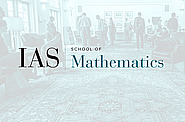2004-2005 seminars
Nov
15
2004
Computer Science/Discrete Mathematics Seminar I
On Sensitivity and Chaos
Elchanan Mossel
11:15am|S-101
Nov
09
2004
Computer Science/Discrete Mathematics Seminar II
Slow Mixing of Local Dynamics for Colourings and Independent Sets
David Galvin
10:30am|S-101
Nov
08
2004
Computer Science/Discrete Mathematics Seminar I
Approximation Algorithms for Embeddings into Low-Dimensional Spaces
Piotr Indyk
11:15am|S-101
Nov
02
2004
Computer Science/Discrete Mathematics Seminar II
Explicit Constructions of Bipartite Ramsey Graphs
Boaz Barak and Guy Kindler
10:30am|S-101
Nov
01
2004
Computer Science/Discrete Mathematics Seminar I
Influences and Decision Tree Complexity
11:15am|S-101
Oct
26
2004
Computer Science/Discrete Mathematics Seminar II
Explicit Constructions of Bipartite Ramsey Graphs
Boaz Barak and Guy Kindler
10:30am|S-101
Oct
25
2004
Computer Science/Discrete Mathematics Seminar I
Tic-Tac-Toe Games: Exact Values of Infinitely Many Game Numbers
Jozsef Beck
11:15am|S-101
Oct
19
2004
Oct
18
2004
Oct
12
2004
Computer Science/Discrete Mathematics Seminar II
The Intersection of a Matroid and a Simplicial Complex
10:30am|S-101
